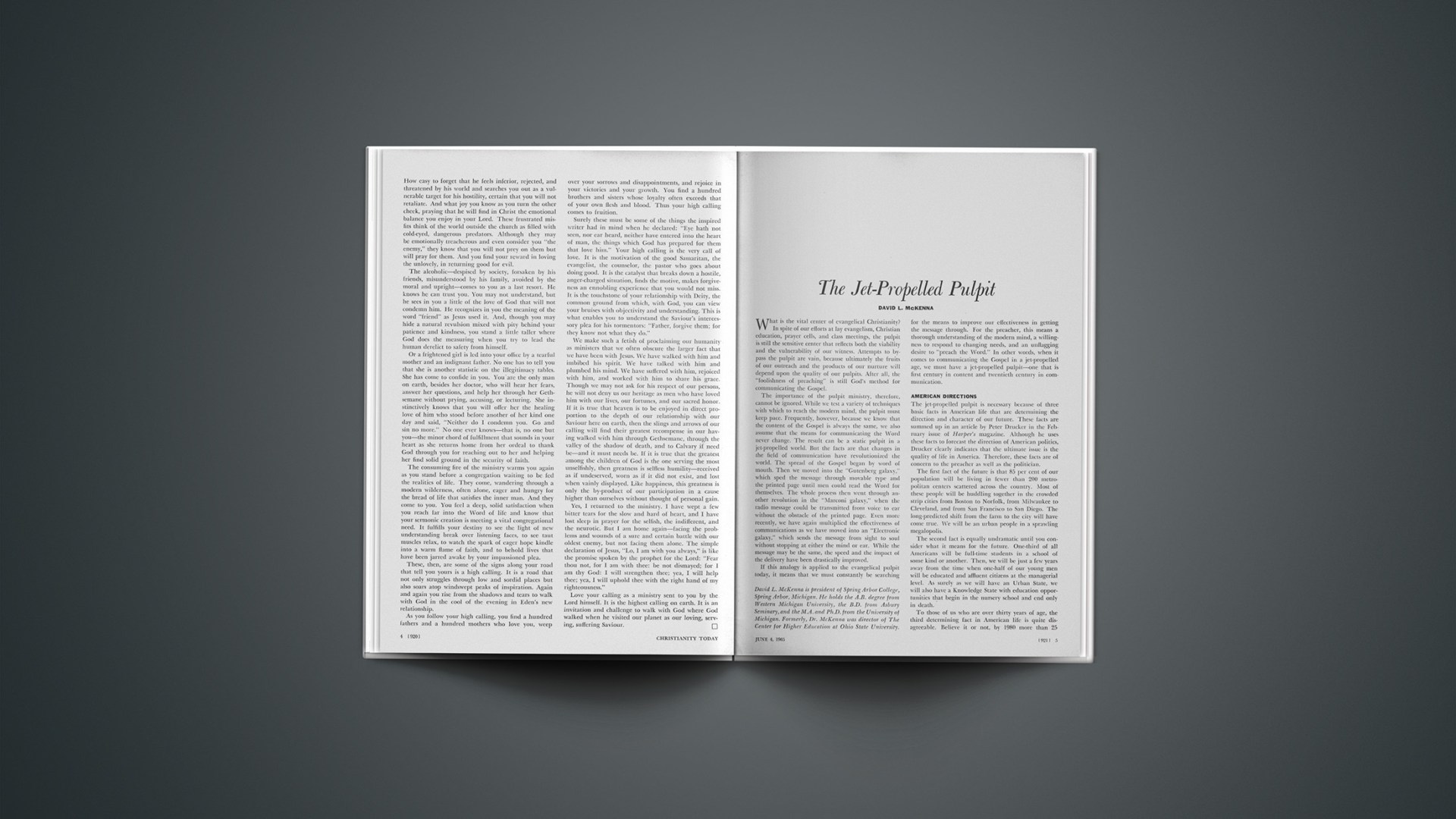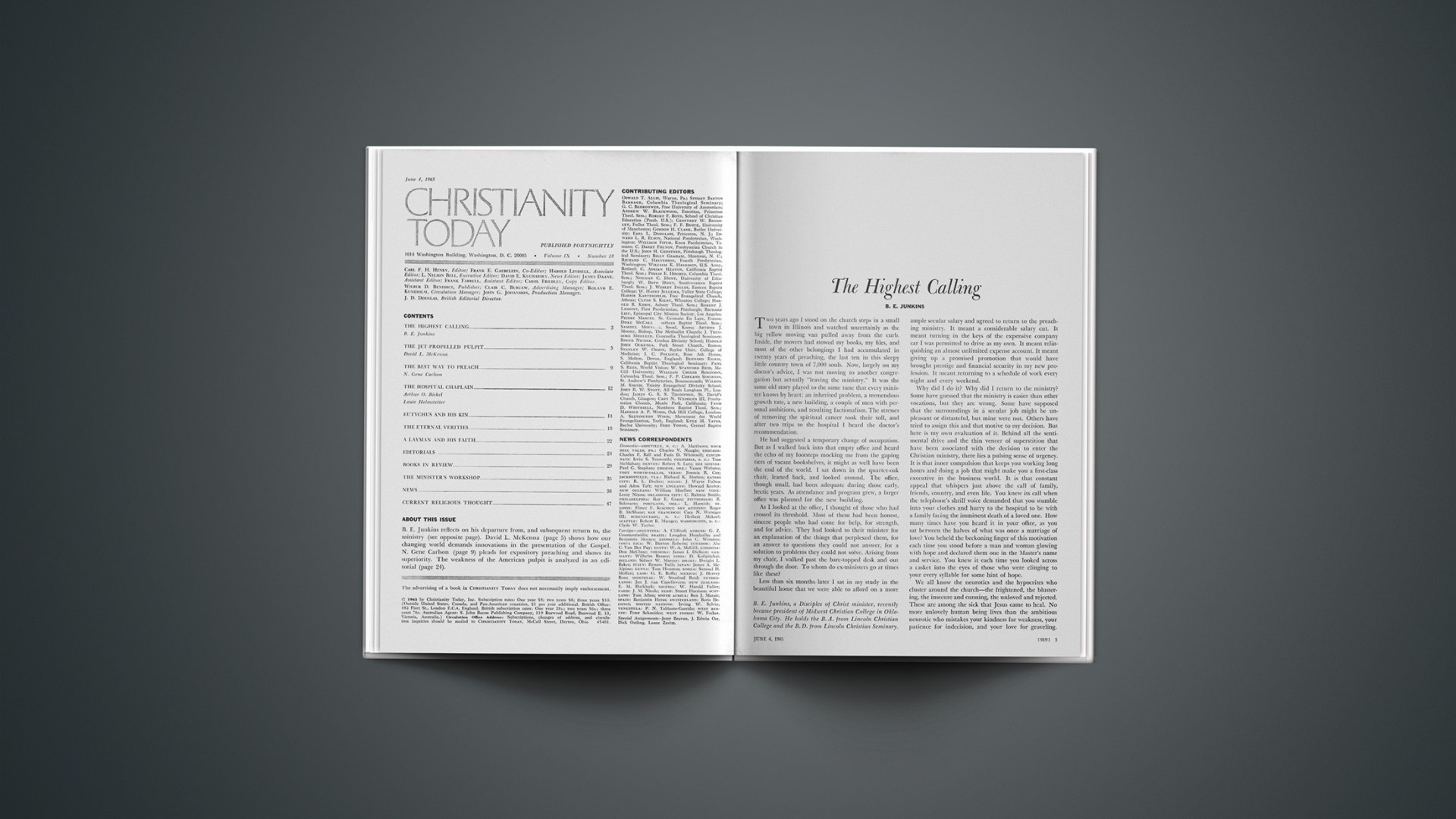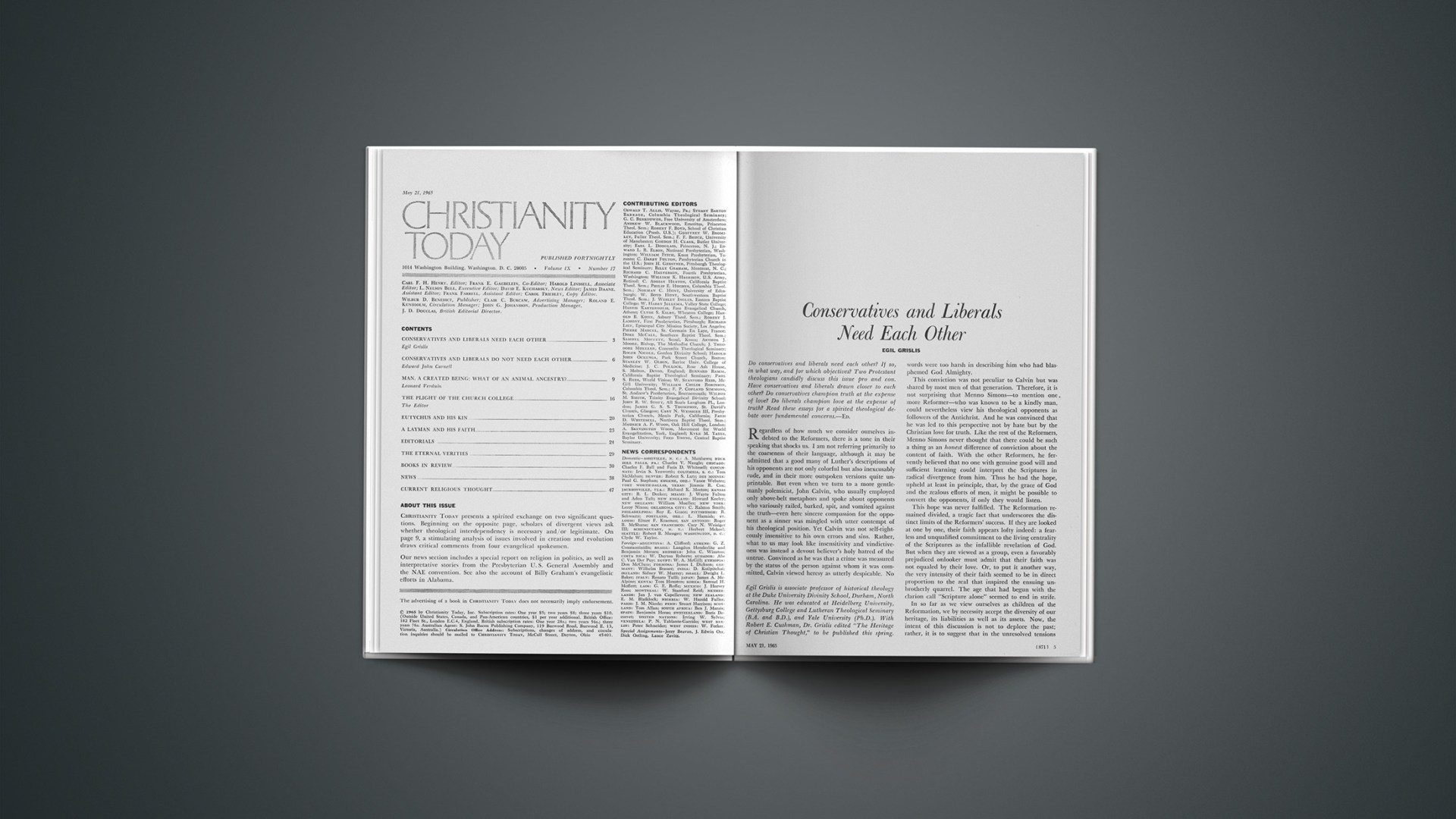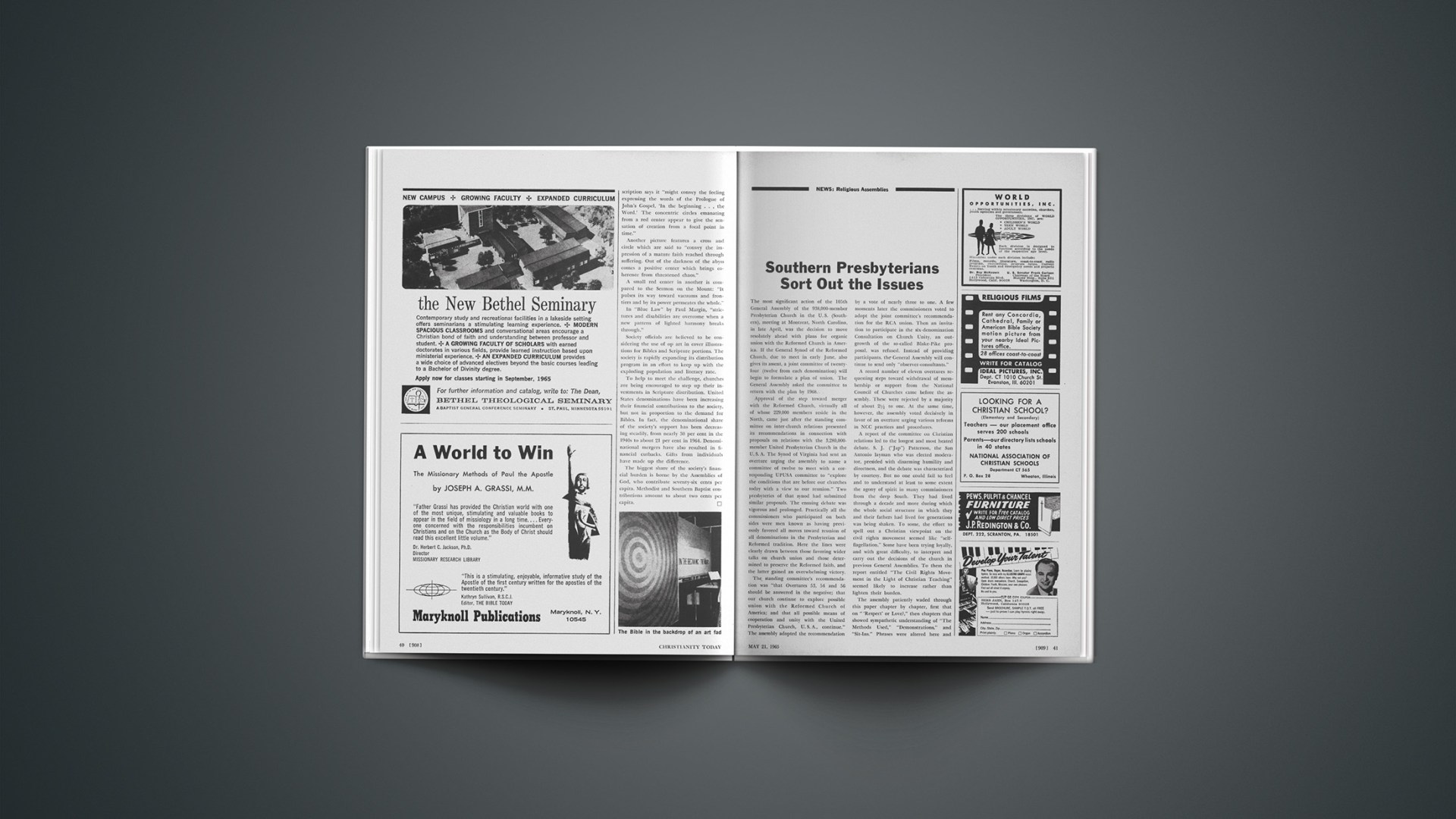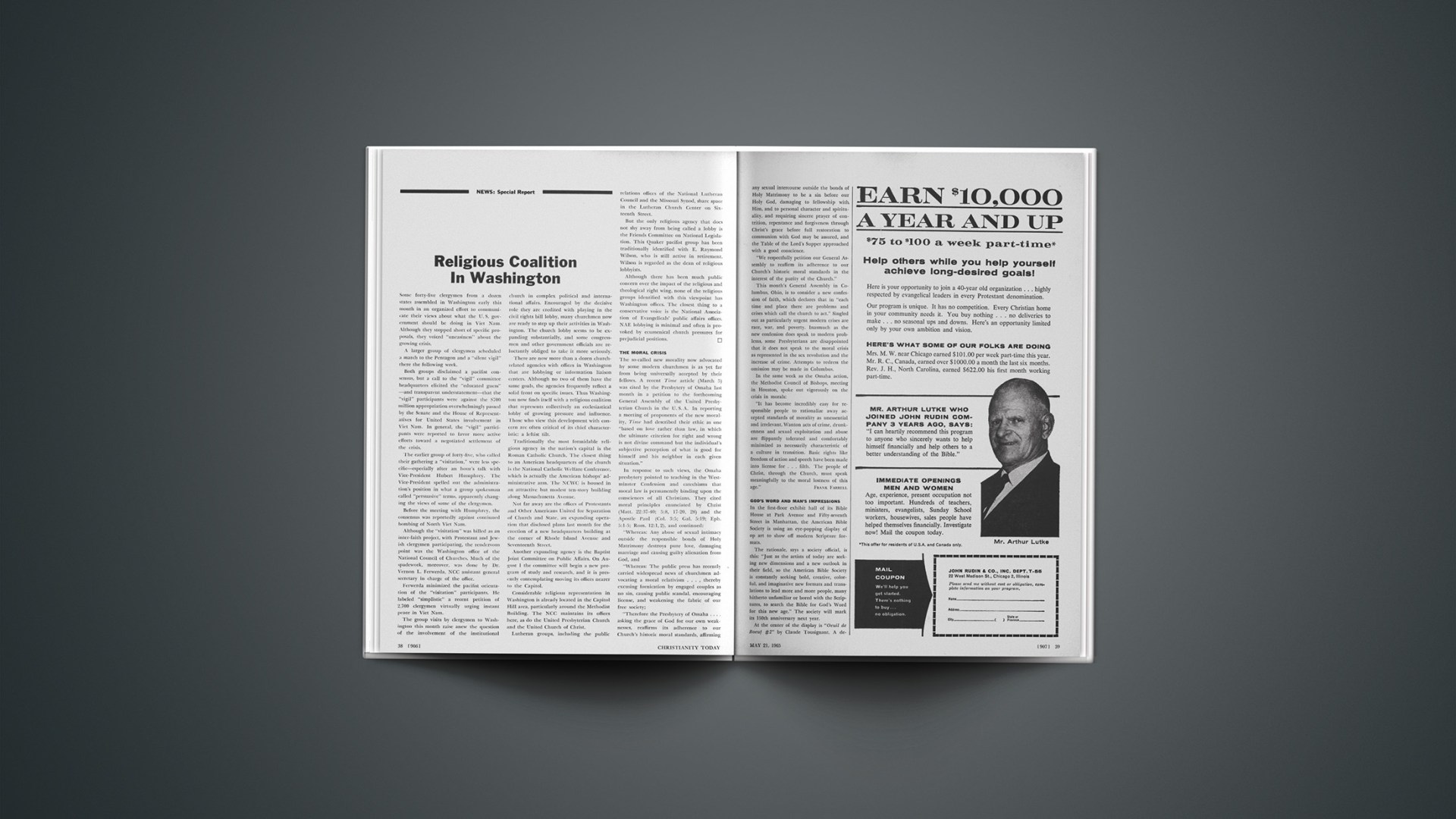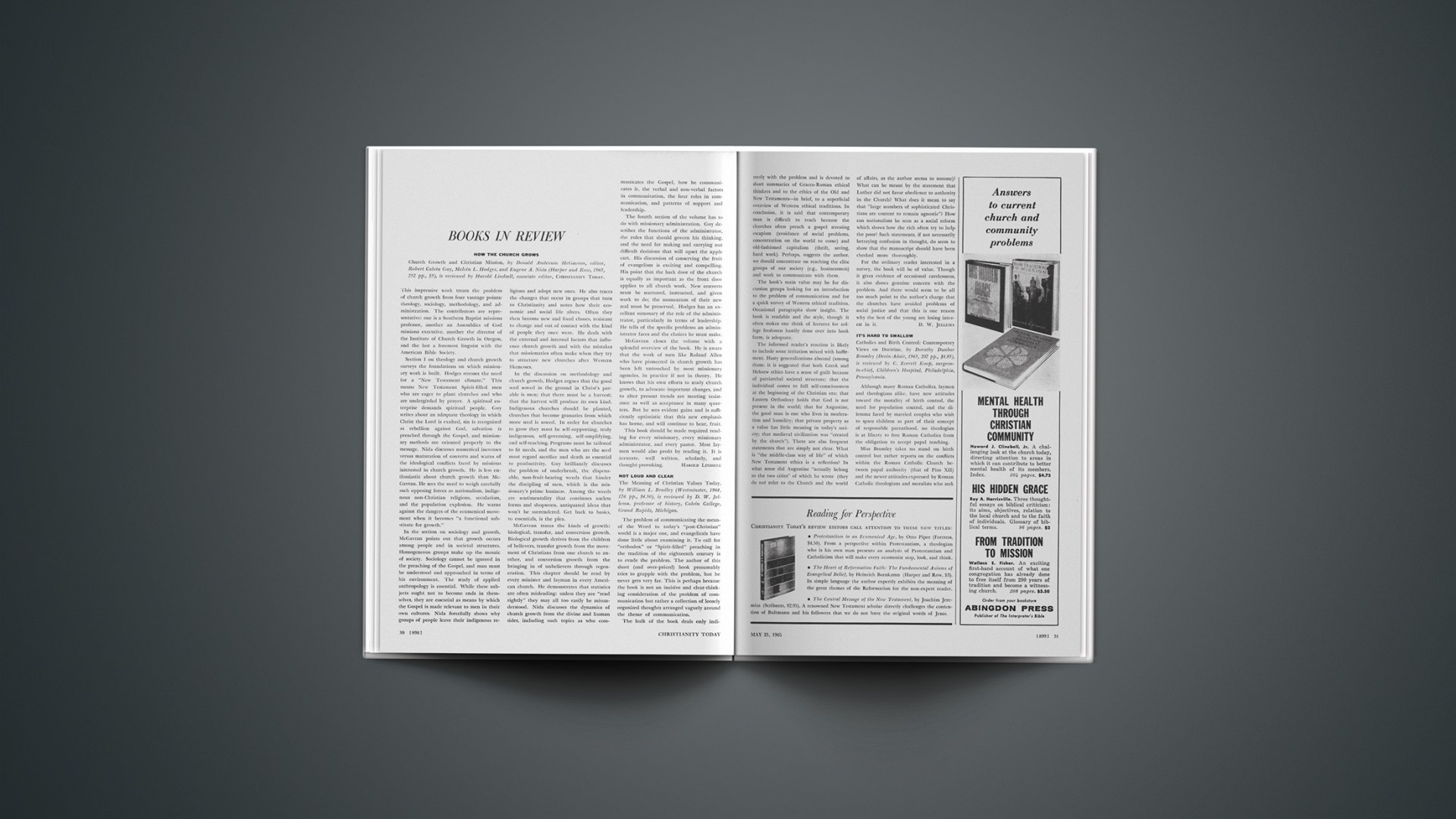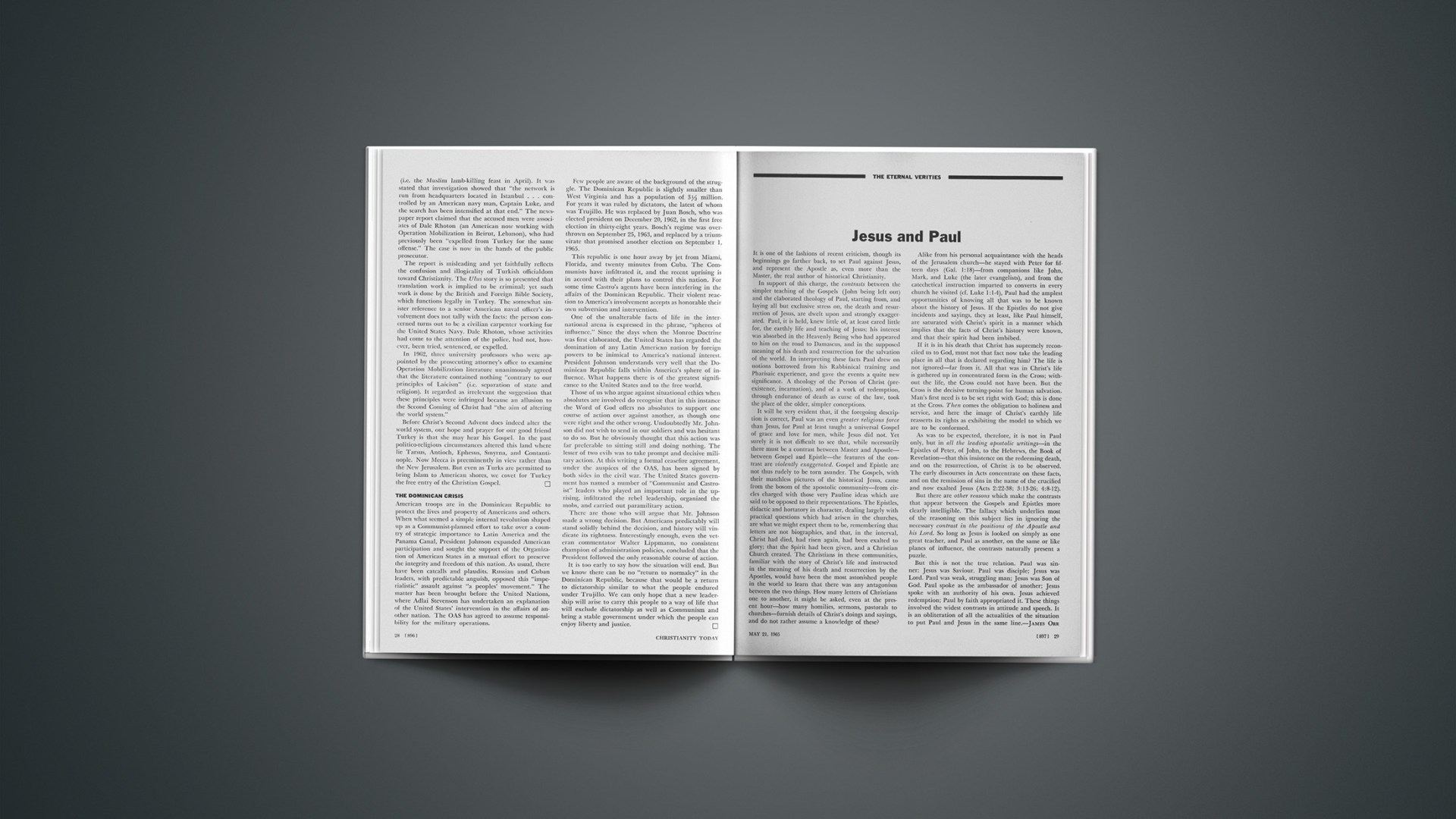Sixty or seventy years ago one who visited a number of Protestant church services might have observed that most sermons were of the expository type. But a similar visit today would very likely reveal a meager amount of this kind of preaching. The never-ending deluge of sermon books and the popular sermon periodicals seldom carry an expository sermon. By and large, the preaching in Protestantism today is of the topical or “life-situation” variety. One cannot help wondering whether something has been discovered that makes expository preaching, the favorite method in the past, invalid today.
Greater concern arises when we observe among conservatives, never questioned for their love of the Book, a paucity of expository preaching. In many large denominational gatherings the topical sermon is used far more frequently than the expository. And conversation with many conservative “colleagues of the cloth” reveals that the topical and life-situation approach predominates in their week-by-week preaching.
Alas, it would also prove embarrassing for me to examine the sermons I have preached in the past few years. Even in my own file the expository sermon is in the minority. Yes, I am the chief of sinners! Such conviction and observation has led to the question: What is wrong with expository preaching?
It may just be that we should re-examine some of our attitudes toward expository preaching. Perhaps we have judged it ineffective because we have failed to understand its true nature.
What Is It?
There are many definitions of the expository sermon. Not least among them is that of John Broadus:
An expository discourse may be defined as one which is occupied mainly, or at any rate very largely, with the exposition of Scripture. It by no means excludes argument and exhortation as to the doctrines or lessons which this exposition develops [On the Preparation and Delivery of Sermons, Harper, 1944, p. 144].
The word “exposition” is, of course, the clue to this method. The word means a setting forth of the meaning or purpose of a writing. Thus in preaching it means laying open for inspection and understanding a certain passage of the Holy Scriptures. And it may be that this somewhat limited understanding of expository preaching has caused it to become sterile and irrelevant. The idea expository preaching frequently brings to mind is that of a rather heavy pedantic presentation of the historical, geographical, and grammatical context of a few verses. If that is expository preaching, little wonder that it has disappeared.
While it is true that in expository preaching the understanding of what the biblical writer was saying is paramount, in no sense does the sermon stop at this point. Pure exposition without application becomes stifling. An enlarged definition, more in the contemporary spirit, captures this emphasis:
Expository preaching seeks to find the basic, contextual-grammatical-historical meaning of a passage of Scripture, and then applies this meaning, by accepted rhetorical processes, to the hearts and lives of the hearers. Expository preaching finds more than a theme in a passage, more than a few suggestions, more than a few platitudes—it finds the abiding message, the timeless truths, the universal values of the passage, and brings them over in direct, powerful, impinging practical applications to modern life situations [Lloyd M. Perry and Faris D. Whitesell, Variety in Your Preaching, Revell, 1954, p. 35].
Perhaps the great downfall of this once exalted method has been at this point. For many it has been considered little more than a glorified Sunday school lesson with little challenge or inspiration, at best informative on a few biblical facts. Halford Luccock, in his book In the Minister’s Workshop, sharply criticizes this shortcoming in much expository preaching: “It is the absence of the engaged ‘clutch’ of the present-day parallel which meshes in with the machinery of the mind and heart that has made so much alleged expository preaching irrelevant and obsolete.”
Expository preaching, in its best form, is the exposing of a certain passage of Scripture around which the sermon is woven and which serves as the basis for the contemporary application.
What Does It Accomplish?
Beyond understanding what expository preaching is, there is a need to recall some of its values. By faithfully practicing the expository approach, we shall save ourselves from some dangerous pitfalls.
First, expository preaching will save us from ourselves. The minister who depends from week to week and year to year upon his own ability to decide what subject he shall preach on and how that subject should be developed will sooner or later discover he is inflicting his own prejudices upon his people. Expository preaching will save us from that. The great temptation facing every preacher is that of making his own word final instead of God’s Word. We develop our sermon and then proceed to put God’s stamp of approval on it by finding a biblical text that will confirm what we have declared to be the Truth.
Secondly, expository preaching will save us from “proof-texting.” One wonders whether the numerous topical indexes of the Bible are a bane or a blessing to the minister. Ready-made sermons almost jump out from their pages. We can too easily find a topic with three separate texts, each providing a point for the sermon. All that remains is to clothe each text with an illustration or two and abracadabra presto chango—we have a sermon without having given any serious study to the Scriptures used. Although this practice may not be “proof-texting,” it is not far from it; and the minister who engages in it habitually may leave himself open to the worst of indictments—mishandling the Word of God.
Thirdly, expository sermons will save us from making the Bible a “springboard for discussion.” I have been guilty, as have many others, of building a beautiful sermon only to realize at completion that there was no text. But that was little reason for despair. With the help of a good topical index I found a text that conveniently fitted the beginning of the sermon. Although the text did not add a great deal to the sermon, neither did it do much harm. And it made a nice starting point. But in all honesty this practice can only be described as a departure from preaching God’s Word.
Fourthly, expository preaching will save us from making the Bible merely an anthology of religious quotes and illustrations. As we journey through our sermon quoting from the poets, the philosophers, and the theologians, it seems good to throw in an occasional quotation from one of the biblical writers. And it also seems good to recite occasionally a biblical story that illustrates the point being made. Let me say that such a practice is not necessarily wrong; indeed, it can be very commendable. But the question is whether this represents the way we generally handle the Bible. Do we expound biblical truth, or do we use the Bible to expound our particular slant on the truth?
Finally, expository preaching will save the minister from sterility in his sermons. More than once I have heard a minister say: “I guess I’ll have to get another sermon book; my well has run dry!” Would it not be good to recommend the greatest book of sermons ever written? Is it mere piousness to believe that the minister who pores over a passage of Scripture for weeks before the sermon is to be delivered will be given a vibrant message from above? I do not think so! No one is left empty-handed when a text from God’s Word has been thoroughly explored and studied.
While expository preaching will save us from these dangers, it will, on the positive side, bring to our preaching certain assets. Primarily and most important, it will let God speak through our sermons. This after all is the only purpose of preaching. Foremost in the minister’s thought as he goes into the study to prepare next Sunday’s sermon ought to be his responsibility to make sure that what he says will be God’s Word as spoken through him. One of the classical definitions of preaching is by Bernard Manning: “Preaching is a manifestation of the Incarnate Word, from the written Word, by the spoken word.” If this is the nature of preaching, then the minister who sticks closely to the written Word, finds the divisions for his sermon within the text, uncovers the thought of the biblical writer, and then makes this thought relevant to present needs, can never be far from speaking God’s Word. This is the guarantee of expository preaching.
Again, such preaching will help the Bible come alive in the minds and hearts of those who hear. Some congregations make a big point of bringing Bibles to the church. At every service the minister asks that each Bible be lifted high; anyone who does not have one is so embarrassed that he is sure to bring one to the next service. These Bibles may not be opened during the whole service, but at least they are there. While every Christian ought to have his Bible in church, such coaxing and chiding seems superficial. Having a Bible in hand and open to the passage being discussed should be a natural practice for each Christian. The expository sermon, more than any other, will arouse interest in the Bible. I have found myself removing my Bible from its hidden pocket and following the Scriptures avidly when a minister digs deeply into a text and uncovers divine truth. This is the natural reaction to expository preaching.
What Is Wrong With It?
Let us ask again, “What is wrong with expository preaching?” It is obvious that for the minister who believes the Bible to be a book of myths there is little value in expository preaching. But for those who maintain that the Bible is actually God’s Word, expository preaching, while it may not be the only method, must certainly be the supreme method.
We can well imagine that the disappearance of this method from many pulpits is partly due to the intrusion of liberalism. What we cannot explain is why those who still hold to the credibility of the Bible have abandoned expository preaching. Could it be a case of conformity with prevailing religious practices?
It might be that the real rub is the discipline expository preaching involves. The minister who would preach an expository sermon must be willing to spend the necessary time in his study using all possible resources to let the light of the text break forth. Not only study but prayer is an essential before and during sermon preparation. And beyond this is the difficult task of applying these timeless truths to everyday life situations. It might be that other methods are more attractive because they are less exacting.
No, there is nothing wrong with expository preaching. Everything is right about it. As in the first century, so in the twentieth, the preacher must stand forth and expose “the unsearchable riches of Christ.” And there is no better way for him to do this than through expository preaching.



